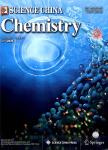Evaluation of non-covalent interaction between Seryl-Histidine dipeptide and cyclophilin A using NMR and molecular modeling
Evaluation of non-covalent interaction between Seryl-Histidine dipeptide and cyclophilin A using NMR and molecular modeling作者机构:Key Laboratory for Chemical Biology of Fujian Province Department of Chemical Biology Department of Chemistry College of Chemistry and Chemical Engineering Xiamen University Xiamen China Shanghai Institute of Materia Medica Shanghai Institutes of Biological Sciences Chinese Academy of Sciences Shanghai China Key Laboratory for Bioorganic Phosphorus Chemistry and Chemical Biology Ministry of Education Department of Chemistry School of Life Sciences and Engineering Tsinghua University Beijing China
出 版 物:《Science China Chemistry》 (中国科学(化学英文版))
年 卷 期:2010年第53卷第9期
页 面:1987-1993页
核心收录:
学科分类:081704[工学-应用化学] 07[理学] 08[工学] 0817[工学-化学工程与技术] 070303[理学-有机化学] 0703[理学-化学]
基 金:supported by grants from the National Natural Science Foundation of China ( 20732004, 30730026, 20805037) the Ministry of Science and Technology of China (2007CB914304)
主 题:Ser-His cyclophilin A HSQC non-covalent interaction binding sites
摘 要:Seryl-Histidine dipeptide(Ser-His) has been previously reported to be capable of cleaving DNAs and carboxyl esters,as well as *** protein cleavage mechanism has not been addressed *** an initial step of protein cleavage activity,the non-covalent binding affinity of Ser-His for proteins is a crucial *** this work,we took cyclophilin A(CyPA) as a substrate protein,and evaluated the non-covalent interaction between CyPA and Ser-His using a combination of NMR spectroscopy and molecular modeling *** independent Ser-His binding sites on CyPA were detected using 15N-1H heteronuclear single-quantum coherence(HSQC) *** binding site binds one Ser-His *** constants,Kd1 and Kd2,were estimated to be 2.07 and 6.66 mmol/L,respectively,indicative of the weak non-covalent interaction between Ser-His and *** on molecular modeling results,we suggest that both the α-amino and the side chain hydroxyl group of Ser-His are crucial for the non-covalent interaction between Ser-His and *** work sheds light on the molecular mechanism of Ser-His and its analogues cleaving proteins.



